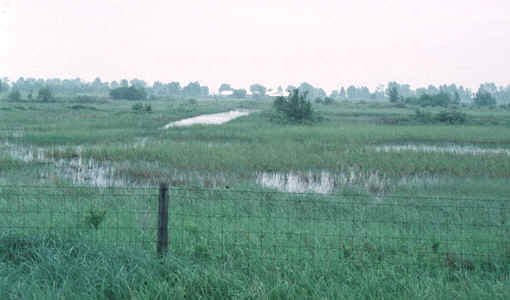"SWALE" LAKES
Many of Michigan's lakes occur on low, broad swales. Often, such swales are old lake beds or outwash
plains. One such area is the flats near Houghton Lake (shown below).

This area is an old outwash plain, the center of which is occupied by the very shallow
Houghton Lake. One of the reasons it is so popular as a ice-fishing destination is
because it IS so shallow.
This area is also the headwaters for the Muskegon River.
How did these lakes form? In sum, their genesis has everything to do with glaciation. A major result of the glaciation was the disruption of previous river drainage systems and the creation of a large number of inland lakes, swamps, and wetlands. The more than 11,000 inland lakes are largely the result of water accumulating in depressions created by the glaciation, forming lakes of various sizes. A great deal of Michigan’s farmland was originally swampy and had to be artificially drained in order to make it useful for raising crops.
This material has been compiled for educational use only, and may not be reproduced without permission. One copy may be printed for personal use. Please contact Randall Schaetzl (soils@msu.edu) for more information or permissions.